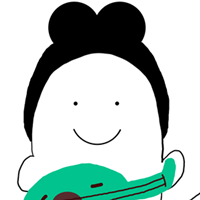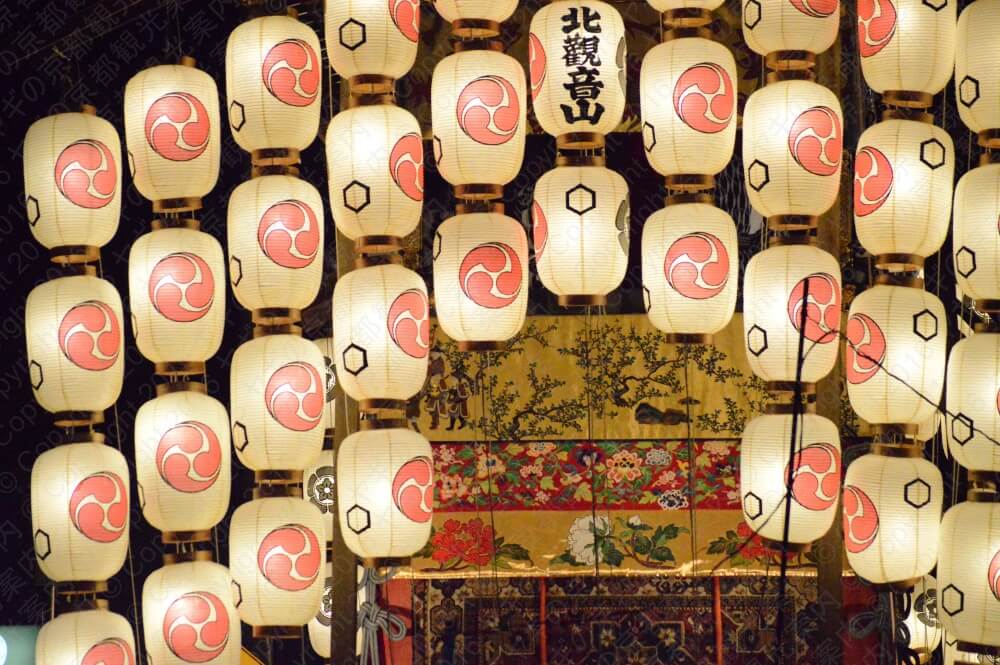THE GIST OF THIS ARTICLE
- Page 1 Introduction, Why Gion Matsuri celebrated?, Must sees 1: General
- Page 2 Must-sees 2: Shiji (rituals), Must-sees 3: De facot Shinji, Must-sees4: Kami Nigiwai
- Page 3 Breaking 2024, Schedule of 2024 (Yamahoko Parade, Hokotate, Kaisho, How to get to Gion Matsuri?
- Page 4 Gion Matsuri schedule 1
- Page 5 Gion Matsuri schedule 2
- Page 6 Gion Matsuri schedule 3
- Page 7 Mikoshis
- Page 8 Saki Matsuri Yamahoko floats 1: Naginata Hoko, Kanko Hoko, Kikusui Hoko, Tuski Hoko, Niwatori Hoko, Hoka Hoko
- Page 9 Saki Matsuri Yamahoko floats 2: Iwato Yama , Hune Hoko , Yamabushi Yama, Moso Yama, Taishi Yama, Kakkyo Yama, Hosho Yama
- Page 10 Saki Matsuri Yamahoko floats 3: Abura Tenjin Yama, Shijo Kasa Hoko, Toro Yama, Hakuga Yama ,Tokusa Yama, Arare Tenjin Yama
- Page 11 Saki Matsuri Yamahoko floats 4: Hakurakuten Yama, Ashikari Yama, Urade Yama, Ayagasa Hoko
- Page 12 Ato Matsuri Yamahoko floats 1: Kita Kannon Yama, Minami Kannon Yama, Hashi Benkei Yama, En no Gyojya Yama , Koi Yama, Hachiman Yama
- Page 13 Ato Matsuri Yamahoko floats 2: Suzuka Yama, Kuronushi Yama, Jyomo Yama, Ohune Hoko, Taka Yama
- Page 14 Breaking 2023
- Page 15 Braking 2022, 2021, 2020, Bibliography
The following is the contents of this article.
BREAKING NEWS 2024
Reservation Seats 有料観覧席
Reservation seats are available in Saki Matsuri and Ato Matsuri. They go on sale on 6/11/2024. Check out Kyoto Tourism Assosiation.
For Saki Matsuri and Ato Matsuri
- Seats・・・Front row 6,100 JPY and other rows 4,100 JPY
- Seats with audio guide・・・・Front row 11,000 JPY and other rows 9,000 JP
- Premium seats・・・150,000 JPY
- Premium seats with Kankoboko guide ・・・200,000 JPY

Premium seats are special ones with shades and cold drinks.
Schedules 2024 (July)
General
| Date | Hours | EVENTS | |
| 1st | 10:00 | Naginatahokocho Osendo 長刀鉾町御千度 |
Ochigosan and the neighbourhood association of Naginata Hoko pay a visit to Yasaka shrine. |
| 2nd | 11:30 | Yamahoko Rengokai Shasan 山鉾連合会社参 |
Members of Yamahoko Rengokai association pay a visit to Yasaka shrine. |
| 3rd | 14:00 | Hamo Hono Hokoku Sai 鱧奉納奉告祭 |
The Tourism Assosiation of Awaji dedicates Hamo fishes. |
| 7th | 14:30 | Ayagasahoko Chigo Shasan 綾傘鉾稚児社参 |
Ochigosan and the neighbourhood association pay a visit to Yasaka shrine. |
| 10th | 13:00 | Japanese Mythology Reading 日本神話語り奉納 |
Story tellers’ dedication of Japanese Mythology. |
| 16:30 | Omukae Chochin お迎え提灯 |
Parade welcomes Mikoshis | |
| 20:00 | Mikoshi Arai Shiki 神輿洗式 |
Mikoshi is cleansed on Shijo Ohashi bridge | |
| 13th | 11:00 | Naginatahoko Chigo Shasan 長刀鉾稚児社参 |
Ochogosan pays a visit to Yasaka shrine on his steed. |
| 14:00 | Kuze Chigo Shasan 久世稚児社参 |
The counsil of Ayato Kuninaka shrine pays a visit to Yasaka shrine. | |
| 14th | 10:30 | Shinsenen, Gionsha Goshinsui Koukan 神泉苑・祇園御神水交換 |
At Shinsenen temple, Yasaka shrine and Shinsenen exchange the sacred water each other |
| 15th | 10:00 | Ikamaryuu Hocho Honoshiki 生間流包丁奉納式 |
In the main hall of Yasaka shrine. |
| 20:00 | Yoimiya Sai 宵宮祭 |
Preiests lead the Deities to Mikoshi. | |
| 16th | 9:00 | Kencha Sai 献茶祭 |
At Yasaka Shrine. |
| 18:30 | Iwami Kagura Hono 石見神楽 |
The Kagura performance tells a story of the Deity. | |
| 23:00 | Hiyori Kagura 日和神楽 |
The musicians of Yamahoko floats dedicates Kagura music to the Deities at Otabisho. | |
| 17th | 9:00 | Yamahoko Parade 山鉾巡行 |
23 Yamahokos |
| 16:00 | Shinkoh Sai 神幸祭 |
Ceremony at Yasaka shrine | |
| 18:00 | Mikoshi Togyo Syupatsu Sai 神輿渡御出発祭 |
3 Mikoshis head for Otabisho. | |
| 23rd | 9:00 | Sencha Kencha Sai 煎茶献茶祭 |
At Yasaka Shrine. |
| 14:00 | Ohake Kiyoharae shiki オハケ清祓式 |
Ceremony at Matarabisha | |
| 22:00 | Hiyori Kagura 日和神楽 |
The musicians of Yamahoko floats dedicates Kagura music to the Deities at Otabisho. | |
| 24th | 9:30 | Yamahoko Parade 山鉾巡行 |
11 yamahokos |
| 9:30 | Hanagasa Parade 花傘巡行 |
Parade belongs to Yamahoko parade | |
| Around 23:00 | Kanko Sai 還幸祭 |
3 Mikoshis return Yasaka shrine. | |
| 28th | 20:00 | Mikoshi Arai Shiki 神輿洗式 |
Mikoshi is cleansed on Shijo Ohashi bridge |
| 31st | 10:00 | Eki Jinja Nagoshi Sai 疫神社夏越祭 |
At Eki Jinja shrine, in Yasaka shrine. |
The order of Yamahoko Parade 2024
Saki Matsuri 前祭
| 順番 | くじ | 山鉾 |
| 1 | くじ取らず | 長刀鉾 Naginatahoko |
| 2 | 山壱番 | 油天神山 Abura Tenjin Yama |
| 3 | 山弐番 | 伯牙山 Hakuga Yama |
| 4 | 山参番 | 白楽天山 Hakurakuten Yama |
| 5 | くじ取らず | 函谷鉾 Kanko Hoko |
| 6 | 山四番 | 山伏山 Yamabushi Yama |
| 7 | 傘壱番 | 綾傘鉾 Ayagasa Hoko |
| 8 | 山五番 | 保昌山 Hosho Yama |
| 9 | 鉾壱番 | 鶏鉾 Niwatori Hoko |
| 10 | 山六番 | 霰天神山 Arare Tenjin Yama |
| 11 | 山七番 | 芦刈山 Ashikari Yama |
| 12 | 山八番 | 孟宗山 Moso Yama |
| 13 | 鉾弐番 | 月鉾 Tsuki Hoko |
| 14 | 山九番 | 太子山 Taishi Yama |
| 15 | 傘弐番 | 四条傘鉾 Shijo Kasahoko |
| 16 | 山拾番 | 蟷螂山 Toro Yama |
| 17 | 鉾参番 | 菊水鉾 Kikusui Hoko |
| 18 | 山拾壱番 | 木賊山 Tokusa Yama |
| 19 | 山拾弐番 | 郭巨山 Kakkyo Yama |
| 20 | 山拾参番 | 占出山 Urade Yama |
| 21 | くじ取らず | 放下鉾 Hohka Hoko |
| 22 | くじ取らず | 岩戸山 Iwato Yama |
| 23 | くじ取らず | 船鉾 Fune Hoko |
Ato Matsuri
| 順番 | くじ | 山鉾 |
| 1 | くじ取らず | 橋弁慶山 Hasih Benkei Yama |
| 2 | くじ取らず | 北観音山 Kita Kannon Yama |
| 3 | 山一番 | 黒主山 Kuronushi Yama |
| 4 | 山弐番 | 鯉山 Koi Yama |
| 5 | 山参番 | 鈴鹿山 Suzuka Yama |
| 6 | くじ取らず | 南観音山 Minami Kannon Yama |
| 7 | 山四番 | 浄妙山 Jyomyo Yama |
| 8 | 山五番 | 八幡山 Hachiman Yama |
| 9 | 山六番 | 役行者山 En no Gyoja Yama |
| 10 | くじ取らず | 鷹山 Taka Yama |
| 11 | くじ取らず | 大船鉾 Ohfune Hoko |
Yamahoko building
| Saki Matsuri 前祭 | |
| 10th | Naginata Hoko長刀鉾 |
| Kanko Hoko函谷鉾 | |
| Niwatori Hoko鶏鉾 | |
| Kikusui Hoko菊水鉾 | |
| Tsuki Hoko月鉾 | |
| 11th | Fune Hoko船鉾 |
| Hoka Hoko放下鉾 | |
| Iwato Yama岩戸山 | |
| 12th | Hosho Yama保昌山 |
| Hakuga Yama伯牙山 | |
| 13th | Ashikari Yama芦刈山 |
| Urade Yama占出山 | |
| Yamabushi Yama山伏山 | |
| Arare Tenjin Yama霰天神山 | |
| Kakkyo Yama郭巨山 | |
| Hakuga Yama伯牙山 | |
| Ashikari Yama芦刈山 | |
| Abura Tenjin Yama油天神山 | |
| Tokusa Yama木賊山 | |
| Taishi Yama太子山 | |
| Hakurakuten Yama白楽天山 | |
| Ayagasa Hoko綾傘鉾 | |
| Toro Yama蟷螂山 | |
| 14th | Moso Yama孟宗山 |
| Shijo Kasahoko四条傘鉾 | |
| Atomatsuri 後祭 | |
| 18th | Minami Kannnon Yama南観音山 |
| Shijo Ofune Hok四条大船鉾 | |
| Takayama鷹山 | |
| 19th | Koiyama鯉山 |
| Kuranushi Yama黒主山 | |
| Minami Kannon Yama南観音山 | |
| Koi Yama鯉山 | |
| 20th | Ennno Gyoja Yama役行者山 |
| Suzuka Yama鈴鹿山 | |
| Hachiman Yama八幡山 | |
| 21st | Hashi Benkei Yama橋弁慶山 |
Kaisho open hours
Kaisho is a place each Yamahoko float belongs to. Usually, it is a storehouse of floats. In Gion Matsuri, it works as headquarters. We can enjoy Kaisyo Kazari and buy souvenirs there.
| Sakimatsuri 前祭 | |
| 12th~16th | Ayagasa Hoko綾傘鉾 |
| 13th~16th | Naginata Hoko長刀鉾 |
| Kanko Hoko函谷鉾 | |
| Niwatori Hoko鶏鉾 | |
| Kikusui Hoko菊水鉾 | |
| Tsuki Hoko月鉾 | |
| Hoka Hoko放下鉾 | |
| Fune Hoko船鉾 | |
| Iwato Yama岩戸山 | |
| Hosho Yama保昌山 | |
| Urade Yama占出山 | |
| Hakurakuten Yama白楽天山 | |
| 14th~16th | Moso Yama孟宗山 |
| Yamabushi Yama山伏山 | |
| Arare Tenjin Yama霰天神山 | |
| Kakkyo Yama郭巨山 | |
| Hakuga Yama伯牙山 | |
| Ashikari Yama芦刈山 | |
| Abura Tenjin Yama油天神山 | |
| Tokusa Yama木賊山 | |
| Taishi Yama太子山 | |
| Toro Yama蟷螂山 | |
| Shijo Kasahoko四条傘鉾 | |
| Atomatsuri 後祭 | |
| 20th | Ofune Hoko 大船鉾 |
| 21st~23rd | Ennno Gyoja Yama役行者山 |
| Shijo Ofune Hok四条大船鉾 | |
| Minami Kannnon Yama南観音山 | |
| Hashi Benkei Yama橋弁慶山 | |
| Koi Yama鯉山 | |
| Jyomyo Yama浄妙山 | |
| Kuranushi Yama黒主山 | |
| Suzuka Yama鈴鹿山 | |
| Hachiman Yama八幡山 | |
| Takayama鷹山 | |
| Not available | Kita Kannnon Yama北観音山 |
How to get to Gion matsuri festival
Usually, taking Kyoto city bus is the most easiest way to access to any where in Kyoto but bus route is subject to be changed in July.

Attention!
The routes of Kyoto city bus are to be changed during Gion Matsuri period. It would be better to take trains and subways indicated below.
Take Kyoto municipal subway, Hakyu railways and Keihan railways.
Stations are;
Sijyo station (Kyoto municipal subway)
Karasuma station (Hakyu railways)
Shijo kawaramchi station (Keihan railways)



